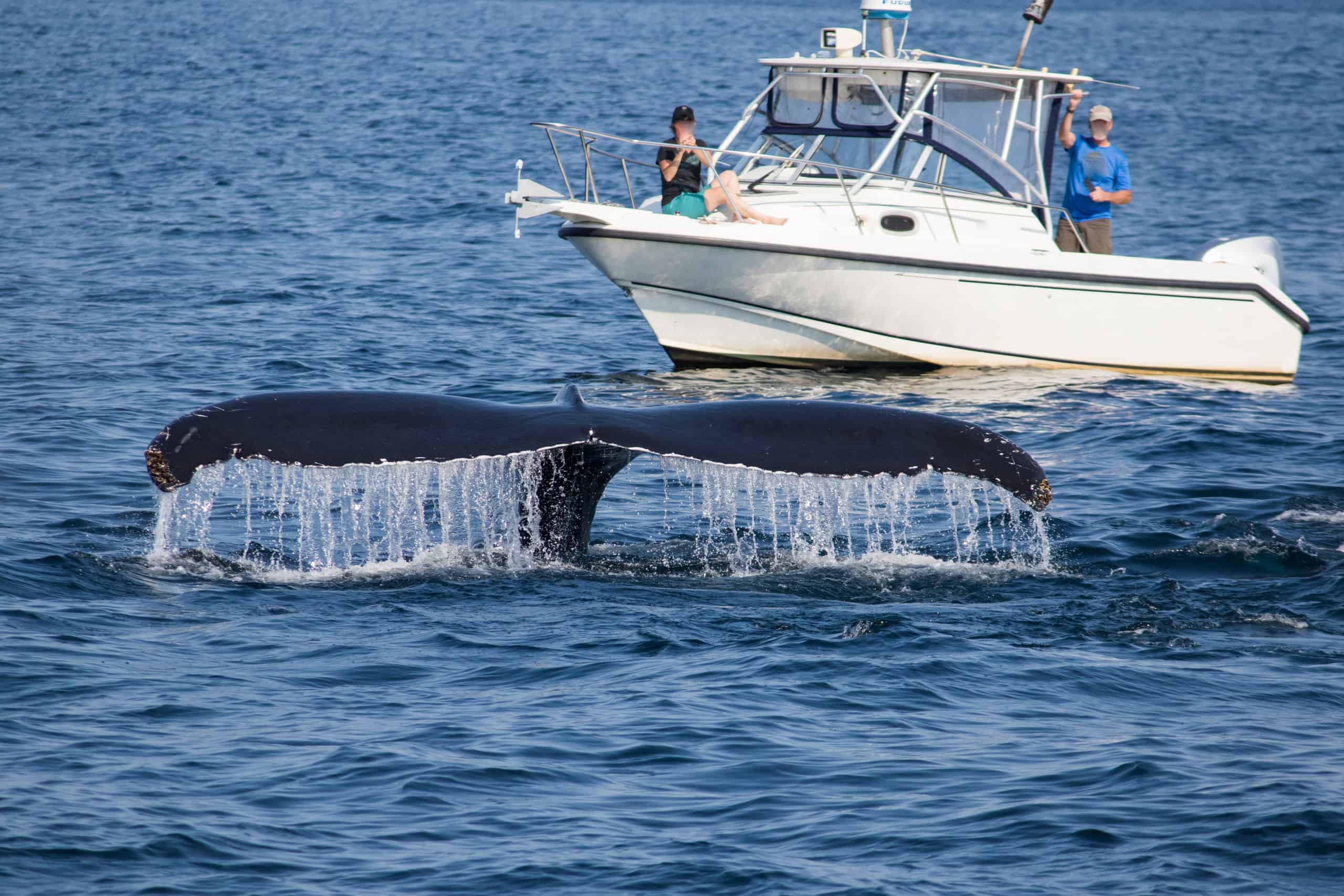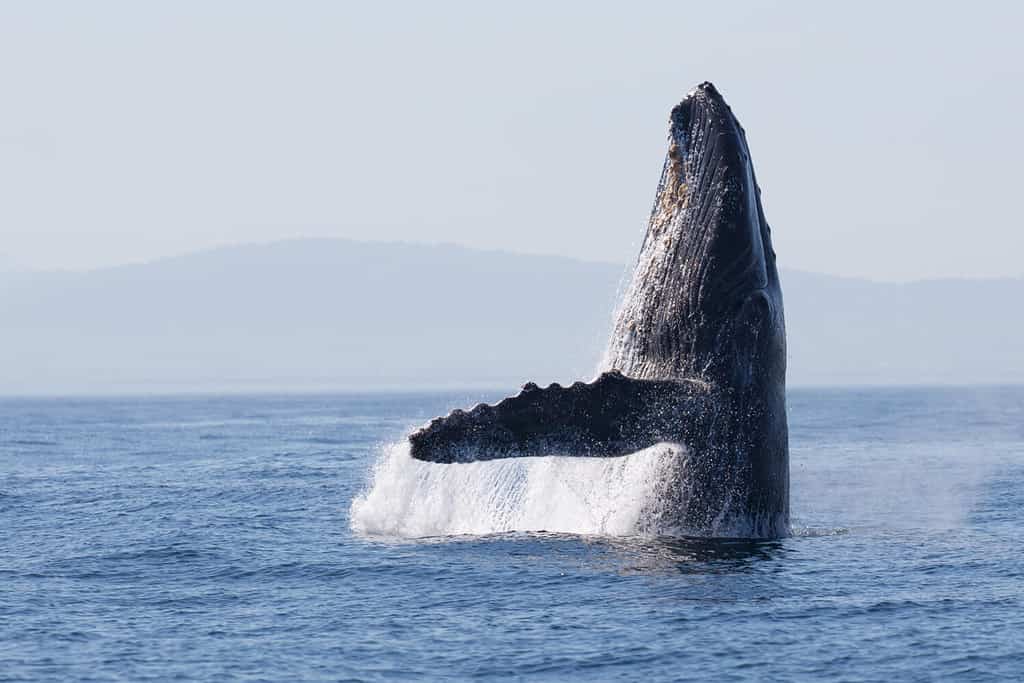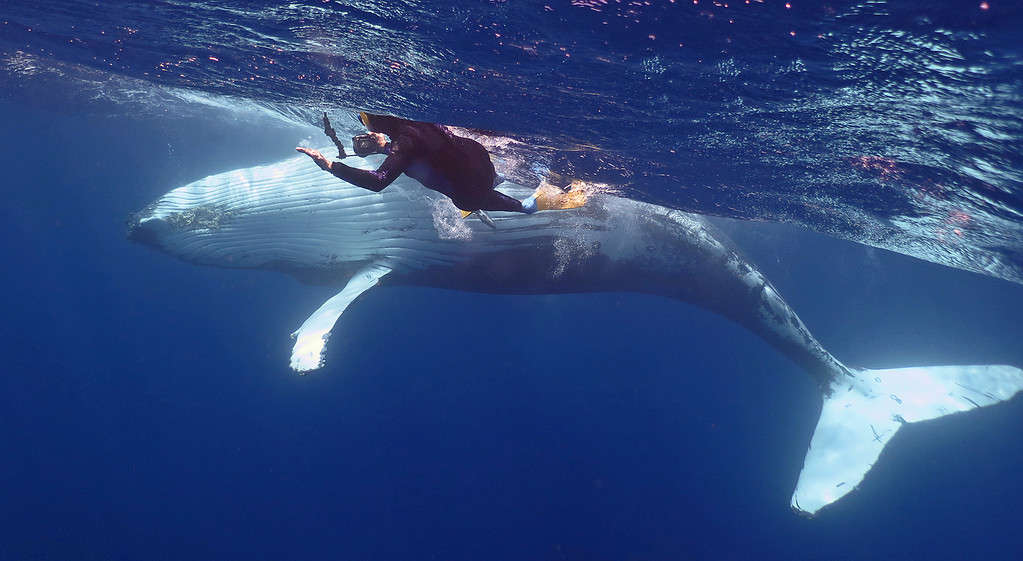Continue reading for our analysis...

Intriguing Facts and Features of the Giant Gray Whale!
Bewildered Boaters Experience an Encounter They’re Sure to Never Forget!
In the heartwarming and unforgettable video below, lucky individuals on a small boat meet a magnificent gray whale. The colossal creature floats vertically next to the boat, concealing its enormous body underwater, akin to an enigmatic iceberg.
The gentle giant remains motionless, showcasing its remarkable ability to hold position in its aquatic habitat with ease. With only the tip of its colossal form visible, the gray whale invites the awestruck spectators to approach and interact. Fear turns to wonder as humans touch the whale’s snout, offering chin rubs and showers of affectionate kisses.
Amid the scene, one passenger lightens the mood with a playful remark, teasing the man giving kisses to the whale, “Your girlfriend is going to get jealous!” As laughter fills the air, it bonds the spectators over the surreal experience they share with this gentle giant of the deep.
As the interaction comes to an end, the humble gray whale begins to drift away, gracefully slipping beneath the waves once more. Consequently, an enchanting encounter with one of nature’s most majestic and peaceful creatures forever etches a memory in bewildered boaters’ hearts.
The awe-inspiring video serves as a poignant reminder of our profound connection with the natural world and leaves viewers with a renewed appreciation for the wonders that lie beneath the surface of our vast oceans.
Gray Whale or Humpback, How Does One Tell the Difference?

With only the tip of its colossal form visible, the gray whale invites the awestruck spectators to approach and interact.
©Tory Kallman/Shutterstock.com
To differentiate between gray whales and humpback whales, several key characteristics can be observed. Firstly, when observing their appearances, humpback whales possess long pectoral fins and distinctive knobby protuberances on their heads, whereas grey whales showcase a more streamlined body with a less pronounced hump and a heart-shaped blowhole spray. Secondly, their behaviors offer valuable clues; humpbacks are known for their acrobatic breaching and complex songs, whereas grey whales display benthic feeding behaviors, scooping food from the ocean floor. Moreover, their habitats differ, with humpbacks frequenting various coastal areas worldwide, while grey whales undertake extensive migrations between Arctic feeding grounds and Baja California breeding areas. By recognizing these distinctions, one can confidently identify these fascinating cetaceans.

Humpback whales possess long pectoral fins and distinctive knobby protuberances on their heads, whereas grey whales showcase a more streamlined body with a less pronounced hump.
©Travis Potter/Shutterstock.com
How Often Do Humpbacks Interact With Humans?
Throughout history, humpback whales and humans shared an evolving relationship. It included a dark past of whale hunting and a present of whale watching and conservation efforts. Not long ago, humpback whales faced horrific commercial whaling. Relentless hunting for resources led to a significant decline in populations.
A pivotal turning point came with international regulations. The moratorium on commercial whaling by the International Whaling Commission safeguarded humpback whales and others from extinction. In the present day, whale watching replaces the dark pasts of whale hunting. People embark on journeys to witness humpback whales in natural habitats.

As the relationship between humpback whales and humans has transitioned from hunting to study, divers have had the chance to come up close with these magnificent aquatic giants.
©Mark Nyman/Shutterstock.com
Responsible whale-watching practices respect whales’ space and minimize disturbances. These eco-conscious endeavors aim to foster admiration and empathy for gentle giants. The awe-inspiring video below reminds us of this positive transformation. Lucky individuals can now experience a heartwarming encounter with whales of multiple species, including gray whales and humpbacks. Rather than being part of a crew that hunts these intelligent beauties. The profound connection between humans and the gentle giant exemplifies harmonious coexistence. It defines the modern era of humpback and human interactions.
Reflecting on history, we acknowledge past dark shadows and celebrate preservation efforts. A promising future is ensured for humpback whales in our oceans.
How Did Humpback Whales Earn Their Hump-Based Name?
Humpback whales earned their name due to a distinctive physical feature that sets them apart from other species of whales. Despite the dark past of whaling, these creatures were valued and studied, eventually being classified as endangered and protected. The prominent hump-like shape of their torso aptly named these huge filter feeders. As they arch before diving into the depths of the ocean, it can be seen on their backs. This unique characteristic is noticeable when the humpback whale prepares for a deep dive, accentuating its grandeur and captivating presence.

A humpback whale calf in the ocean. Its bent tail accentuates the hump-like shape of its dorsal fin.
©Tomas Kotouc/Shutterstock.com
As seen in the video below, whales exhibit remarkable behaviors when interacting with humans, and humpbacks are no different. The sight of a whale’s enormous body concealed beneath the water’s surface is reminiscent of an enigmatic iceberg, showcasing the awe-inspiring hump that lends them their name.
Beyond their physical attributes, humpback whales have played an integral role in human history, inspiring both fear and fascination. Their story has been intertwined with that of humans for centuries. Despite the challenges they have endured, humpback whales endure as enduring symbols of the profound connection we share with the natural world. Today, as we witness them through responsible whale-watching practices as in the video below, we are reminded of the need to preserve and protect these gentle giants. Their name, a tribute to their majestic hump, echoes through the ages. It encapsulates their resilience and the ongoing efforts to ensure their future in our oceans.
Is It Normal for Whales to Interact with Humans?

In Baja California, where this behavior seems to be specific, gray whales are known to swim up to boats and interact with the people aboard them.
©Mogens Trolle/Shutterstock.com
Given the fact that gray whales were once hunted to almost extinction, and even earned the nickname ‘devil fish’ due to their propensity to fight back when being attacked by whalers, it is interesting that it is now quite common to see them interact with humans in a positive way. On the West Coast, in Baja California, where this behavior seems to be specific, they are known to swim up to boats and interact with the people aboard them. There are numerous accounts of these whales approaching vessels and waiting to be scratched or petted, although researchers do not know why they behave in this manner.
Thank you for reading! Have some feedback for us? Contact the AZ Animals editorial team.







